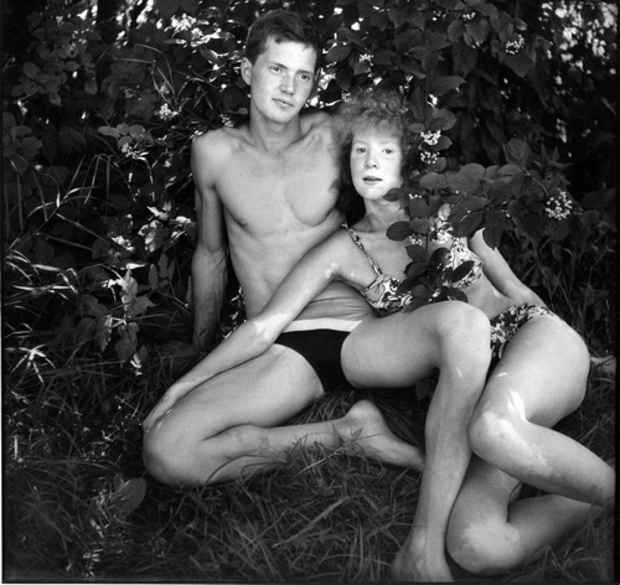Nikolay Bakharev, Gerard Petrus Fieret, and Miroslav Tichý "Three Postwar European Photographers"
Julie Saul Gallery

This event has ended.
Julie Saul Gallery presents this exhibition that combines the work of three powerful and enigmatic photographers who came of age in postwar Europe. Each of them has created very personal and idiosyncratic bodies of work shaped by a particular political environment.
Nikolay Bakharev (b.1946 Altai Region of Russia) is the youngest, only living, and least well known to American audiences, of the group. His work was featured in the “Ostalgia” exhibition last summer at the New Museum which gathered art from Eastern European countries with a curious nostalgia for a painful past. As a critic in the Economist said: “All of this art is political, by the simple act of its creation.” In the case of Bakharev, he was an orphan (his parents died when he was four) who worked as a mechanic until he developed his profession as a self-trained photographer. He grew up in East Russia near Mongolia, and still lives in Siberia.
Bakharev’s models are the people among whom he lives and his depictions can be divided into two distinct bodies of work: private and public. The private images are generally women or couples photographed in their homes, and the public are couples and larger groups in swimsuits photographed in the woods. During the 60s and 70s it was illegal to photograph nudes so the swimmers provided a surrogate. Taking on the role of “beach photographer” enabled Bakharev to both earn a living and depict his subjects in a much more revealing way then was officially allowed.
Bakharev carefully arranges his subjects into compelling poses in which the physical contact is erotically charged, and at the same time display vulnerability and elegance. In this show we have selected works from the “public” realm, although the settings for these images are so constricted within their leafy environments that they almost feel like studio environments.
Gerard Petrus Fieret (Amsterdam 1924-2009) lived in the Netherlands and like Tichý, he was trained as a painter at the Academy and self taught as a photographer. However unlike Tich? and Bakharev he was active in a milieu with no societal restrictions. Fieret maintained a studio practice where he directly engaged with his sitters in a raucous confrontational and experimental mode. There is an open dialogue that is ambiguous and has a performance aspect. Unlike Bakharev’s conventionally printed black and white prints, Fieret worked in a completely inconsistent and fearless way with creased, strangely exposed prints made in a great range of sizes, with dashing signatures in felt tip pen and studio stamps contributing to their strong graphic presence and dada spirit. It is said that Fieret was paranoid and very difficult to work with, but that is not what comes through in his sensual and exuberant work.
Miroslav Tichý (Czech Republic 1926-2011), unlike Bakharev and Fieret, depicted women surreptitiously with eccentric hand made cameras. Only in recent years has his work been discovered and he has been regaled as a visionary with exhibitions at the Kunsthaus Zurich, the Pompidou and the ICP in New York. Following the communist takeover of the Czech republic, Tichý returned from Prague where he attended the Academy of Fine Arts to his small home town of Kyjov, and abandoned his training as a modern painter due to the restrictions placed by the regime who regarded him as a dissident. He began to fabricate cameras from cardboard and photographed women at the local public swimming pool, in parks and made thousands of photographs, up to eighty a day, and each unique. They accumulated in the shack where he lived and worked in squalor, with no running water. There he worked exclusively in photography from around 1972 until 1985 when he returned to painting. A decade later his neighbor and friend brought Tichý to the public eye. The voyeuristic aspect of the work can be unsettling, yet the necessary cropping and distorted perspectives give the prints a strong graphic quality and a great deal of sophistication.
Bakharev in Siberia, Tichý in Kyjov and Fieret in Amsterdam, each engaged obsessively with the subject of women, and each shaped by a strikingly different environment.
Media
Schedule
from February 02, 2012 to March 17, 2012
Opening Reception on 2012-02-02 from 18:00 to 20:00